Carl E. Olson's Blog, page 183
November 20, 2012
Christopher Kaczor on myths about the Church, Galileo, the abuse scandals, contraception, more
Kathryn Jean Lopez, editor of National Review Online, has a lengthy and wide-ranging interview with Dr. Christopher Kaczor, author of 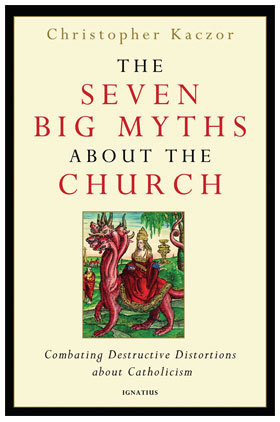 The Seven Big Myths about the Catholic Church: Distinguishing Fact from Fiction about Catholicism, recently published by Ignatius Press. Some excerpts:
The Seven Big Myths about the Catholic Church: Distinguishing Fact from Fiction about Catholicism, recently published by Ignatius Press. Some excerpts:
KJL: In your new book, you explain that “Catholics aren’t anti science, anti-woman, the Aryan nation.” Defensive much?
KACZOR: I
think a good defense and a good offense are necessary to make progress
towards the truth. Unfortunately, there are many people who believe that
the Church is against women or against science. In The Seven Big Myths about the Catholic Church,
I challenge the most common myths, the ones that many secular people
and inactive Catholics, among others, believe. If many people thought
that Catholics were members of the Aryan nation, I would have included a
treatment of this as well. Relatively few people believe Catholicism is
racist, if only because the majority of Catholics in the world are
people of color.
KJL:
“Christianity is
properly measured not by its great sinners but by its great saints” you
write, “for it is the saints who have lived out the Gospel message, not
the great sinners.” Isn’t that conveniently counting people there?
KACZOR:
Not really. How would you evaluate the effectiveness of a medication in
clinical trial? Would you look at how the medication worked for those
who took it as directed or would you look at how it worked for people
who skipped doses or didn’t take the medication at all? G. K. Chesterton
was onto something, “Christianity has not been tried and found wanting;
it has been found difficult and not tried.”
KJL: Do you actually defend the Catholic Church’s treatment of Galileo?
KACZOR:
No and yes. No, I don’t defend the Catholic Church’s treatment of
Galileo insofar as the ecclesial judicial authorities in the trial of
Galileo made serious mistakes. The authorities wrongly condemned
heliocentricism which was, at that time, a proposed but as yet unproven
view. However, this error — and other errors of a disciplinary and
judicial nature — were not a formal part of Catholic teaching. Then, as
now, Church officials can and do make errors, unfortunately sometimes
serious errors, in terms of discipline and order within the Church
community. But yes, I do defend the Church insofar as the Galileo case
was only partially based on scientific disputes but had much to do with
conflicts of personality, politics, and theology of the time. In many
people’s minds, the condemnation of Galileo has become a Catholic
condemnation of science. In fact, at issue was not chiefly the
scientific views of Galileo (which were held by many Catholics of the
time, including the Catholic cleric Copernicus and Jesuit priests in
good standing), but more centrally whether Galileo broke agreements he
had made about in what manner to teach his views and that Galileo
insisted on changing the dominant interpretations of scripture at the
time. Both Galileo himself (who remained a faithful Catholic his whole
life) and those involved in his trial such as St. Robert Bellarmine
agreed that there can never be a true conflict between science and
faith. Apparent but not real conflicts can arise through a mistaken
interpretation of faith (as was made by those who condemned Galileo), a
misunderstanding of science (e.g. that science requires atheism), or
both. It is a myth — albeit a persistent myth — that the Church opposes
science. ...
KJL: Why do you end with the abuse scandals?
KACZOR: The
abuse scandals are extremely important and often misunderstood, so I
wanted to end the book on the topic. Many people mistakenly believe that
celibacy causes pedophilia or that Catholic priests are more likely to
sexually abuse children than other kinds of people. In The Seven Big Myths about the Catholic Church, I provide a great deal of evidence that these beliefs are false. ....
KJL: “The point of contraception is to make sure that there is not a
complete union between the two.” Aren’t you making a bigger deal of this
than it is?
KACZOR: Erotic love — by its very nature — is a drive
towards deeper unity with the beloved, and children are a wonderful
manifestation of the unity between husband and wife. Each child unifies
the husband and wife with each other in a physical sense. Every one of
us is a living manifestation of the union of our mother and father, half
of our DNA from each. This unity, like erotic love itself, is
exclusively bringing together one man and one woman. No other woman is
the mother of his child; no other man is the father of her child. As
long as the child lives, they are unified in their offspring. This unity
is characteristically not limited to the physical. Normally, a unity of
will and affection also arises between the mother and father. They both
love their child, both want what’s best for that child, both delight in
the child’s good fortune, and mourn the child’s misfortunes. Even in
the case of divorce, very often the parents still share a united will to
help their child and will put away their differences and become united
again at important events in the child’s life, like graduations and
weddings.
Ideally, the unity of the parents includes running a
household and raising the child together. They work together, as mother
and father, to provide for the child’s many needs. Their unity which
began as a unified sexual act continues over the years as a unity of
shared activity ordered to the education and raising of the child.
Children therefore help parents realize the goals of erotic love — to be
together, unified physically, psychologically, socially, and
emotionally. Each child unifies these two people together, and no one
else, in a unity that is lasting and exclusive. Children are a good of
marriage that unites the husband and wife in a way that realizes the
aspirations of erotic love.
The use of contraception acts against
the unity sought by erotic love. A couple only uses contraception when
one does not want to a child to unite them. Although their bodies are
partially unified, the point of contraception is to make sure that there
is not a complete unity between husband and wife. Contraception,
through various means, seeks to make sure that part of him (sperm) does
not unite with part of her (egg). Contraception also involves, against
the goals of erotic love, the acceptance of the whole person. Part of
the person, the potential to become a father or a mother, the fertility
of one or both parties, is intentionally rejected, at least for the time
being. If this analysis is correct, then contraception does not serve
the same goals as erotic love.
Read the entire interview on Lopez's blog at Patheos.com. • For more about The Seven Big Myths about the Catholic Church, visit the book's website.
Further details about "Jesus of Nazareth: The Infancy Narratives"
The Vatican Information Service provides further details about the third Jesus of Nazareth book by Pope Benedict XVI, 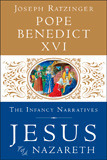
The Infancy Narratives, which will be available for purchase on November 21st:
Vatican City, 20 November 2012 (VIS) - "L'infanzia di Gesu" ("The
Infancy Narratives"), the third volume of Benedict XVI's trilogy
dedicated to Jesus of Nazareth, will be available in Italian bookshops
tomorrow, 21 November. The book, published in Italy by Rizzoli and the
Vatican Publishing House, will be released simultaneously in several
languages (Italian, German, Croatian, French, English, Polish,
Portuguese and Spanish) and in fifty countries; the worldwide print run
of the first edition will be more than a million copies. In the coming
months, the book will be translated into twenty languages for
publication in seventy-two countries.
This morning, in the Vatican's Sala Pio X, the book was presented to
the press. The speakers were Cardinal Gianfranco Ravasi, president of
the Pontifical Council for Culture; Maria Clara Bingemer, professor of
theology at the Pontifical Catholic University of Rio de Janeiro; Fr.
Giuseppe Costa, director of the Vatican Publishing House; Paolo Mieli,
president of Rizzoli (RCS) Publications, and Fr. Federico Lombardi S.J.,
director of the Holy See Press Office.
The book, defined by its author as a "small antechamber" to the
trilogy on Jesus of Nazareth, is 176 pages long and comprises four
chapters, an Epilogue and a brief Foreword. A summary of the book is
given below:
"The first chapter is dedicated to the genealogies of the Saviour in
the Gospels of Matthew and Luke, which are very different, although both
have the same theological and symbolic meaning: the placing of Jesus in
history and his true origin as a new beginning of world history.
"The theme of chapter two is the annunciation of the birth of John
the Baptist and that of Jesus. Rereading the dialogue between Mary and
the Archangel Gabriel in the Gospel of Luke, Joseph Ratzinger explains
that, through a woman, God 'seeks to enter the world anew'. In order to
liberate man from sin, he writes, quoting Bernard of Clairvaux, God
needs 'free obedience' to his will. 'In creating freedom, he made
himself in a certain sense dependent upon man. His power is tied to the
unenforceable yes of a human being'. Thus, only thanks to Mary's assent
can the history of salvation begin.
"Chapter three is centred on the event in Bethlehem and the
historical context of the birth of Jesus, the Roman Empire under
Augustus, which extends from East to West and whose universal dimension
allows for the entry into the world of 'a universal Saviour'; 'it is
indeed the fullness of time'. The single elements of the story of the
birth are dense with meaning: the poverty in which 'he who is truly the
first-born of all that is' chooses to reveal himself, and therefore 'the
cosmic glory' that envelopes the manger; God's special love for the
poor, which manifests itself in the annunciation to the shepherds; and
the words of the Gloria, whose translation is controversial.
"The fourth chapter is dedicated to the three Magi, who saw the star
of the 'King of the Jews' and who had come to adore the child, and to
the flight into Egypt. Here the figures of the 'magoi', reconstructed
through a rich range of historical, linguistic and scientific
information, are outlined as a fascinating emblem of the inner unrest
and search for truth of the human spirit.
More about the book, from the Ignatius Press site:
The momentous third and final volume in the Pope's international bestselling Jesus of Nazareth series details the stories of Jesus' infancy and boyhood, and how they are relevant today in the modern world.
As the Pope wrote in volume two of this series, he attempts to "develop a
way of observing and listening to the Jesus of the Gospels that can
indeed lead to the personal encounter and that, through collective
listening with Jesus' disciples across the ages, can indeed attain sure
knowledge of the real historical figure of Jesus."
Now, the Pope focuses exclusively on the Gospel accounts of Jesus' life
as a child. The root of these stories is the experience of hope found
in the birth of Jesus and the affirmations of surrender and service
embodied in his parents, Joseph and Mary. This is a story of longing and
seeking, as demonstrated by the Magi searching for the redemption
offered by the birth of a new king. Ultimately, Jesus' life and message
is a story for today, one that speaks to the restlessness of the human
heart searching for the sole truth which alone leads to profound joy.
"I can at last consign to the reader the long promised little book on
the narratives of Jesus' childhood . . . Here I have sought to
interpret, in dialogue with exegetes of the past and of the present,
what Matthew and Luke recount at the beginning of their Gospels about
the infancy of Jesus." — Pope Benedict XVI
Vladivostok Mission Celebrates Its 20th Anniversary
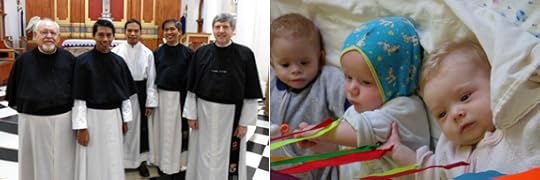
Vladivostok Mission Celebrates Its 20th Anniversary | Jim Graves | Catholic World Report
The Catholic mission in Vladivostok, Russia brings the light of Christ to a poverty-stricken and highly secularized region.
With the collapse of the Soviet
Union in 1991, the Catholic faith was officially allowed to return to Russia
after more than seven decades of life under what Pope Pius XI called “atheistic
communism.” Since that time, Catholics have established missions in
Russia, serving Catholics living within the country’s borders and performing
charitable works. Out of deference to the Russian Orthodox Church, the Vatican
does not consider Russia “mission territory,” and so these communities do not
receive funding from the Congregation for the Propagation of the Faith or engage
in overt evangelism.
In 1992, Father Myron Effing and
Brother (now Father) Daniel Maurer, two Americans from the Midwest, felt called
to serve the Russian people. They went to Vladivostok, a city in Far Eastern
Russia with about 600,000 people, and founded the Canons Regular of Jesus the
Lord and the Mary Mother of God Mission Society
to support their work. Although re-establishing the Faith has been
challenging in a society that has been thoroughly secularized, the work of the
priests has flourished in
the 20 years since the Vladivostok mission was founded, and the future looks promising.
Poverty, crime, and broken families
Vladivostok is a Pacific Ocean
port city, not far from the China and North Korea borders. It has a cool to
mild northern climate, and is often foggy. Its industries include shipping and
fishing, and it is home to a large Russian naval base.
Christianity came to Russia 1,000
years ago, and the first Catholic missionaries arrived in the Russian Far East
180 years ago. Soviet rule virtually wiped out the Church in the area; an
estimated 7,000 Catholics in the region were martyred for their faith.
In 1992, Father Myron and Brother
Daniel learned that there was an acute need for priests in Vladivostok (as well
as all of Russia). They visited the city at the invitation of the diocesan
bishop. At that time, he was located in Novosibirsk, Siberia—2,300 miles away
“as the crow flies,” but more than 3,000 miles in a car or airplane because one
must travel around China.
November 19, 2012
New: "Modern Moral Problems: Trustworthy Answers to Your Tough Questions"
Now available from Ignatius Press:
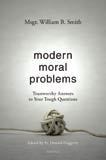
Modern Moral Problems: Trustworthy Answers to Your Tough Questions
by Msgr. William B. Smith
Modern Moral Problems addresses moral quandaries that can
beguile and confuse faithful Catholics. Written in a question-and-answer
format, the book covers questions regarding sexuality, medical ethics,
business practices, civic responsibilities, and the sacramental life of
the Church. The extraordinary assortment of issues-forming a single,
organized collection-is a valuable reference for anyone seeking clear
and concise answers to tough moral questions.
Written in a conversational tone often spliced with humor, this work by a
highly respected moral theologian will be read with fascination for its
clarity of argument and fundamental good sense. Originally published as
a monthly question-and-answer column in a magazine for priests, these
selections by Msgr. William B. Smith retain a striking current
topicality. Msgr. Smith often tackled matters of controversy in the
Catholic Church, ones which continue to draw conflicting opinions.
Interesting, informative, and eminently practical, this book conveys an
overall impression that sound thinking about morality is rooted in a
tradition within the Catholic Church, even when the answers to
particular moral questions cannot be found in catechisms or Vatican
documents. Msgr. Smith offers a clear-headed approach to the quandaries
of our time precisely because of his training in traditional moral
principles and his fidelity to the Catholic magisterium.
This book should be in the possession of all seminarians and priests,
who are bound to confront moral matters that are not so easily decided
at first glance. But lay people, too, will find here rich responses to
the challenging and sometimes unresolved moral questions they encounter
in their own lives.
Monsignor William B. Smith (1939-2009) was a well-known
and highly regarded moral theologian. Ordained for the Archdiocese of
New York in 1966, he taught at New York's major seminary for 37 years. A
consultant to the Congregation for the Doctrine of the Faith and a
primary advisor to Cardinals Cooke, O'Connor, and Egan in New York,
Msgr. Smith also served on ethics committees in a number of New York
Catholic hospitals. He wrote numerous articles for theological journals
as well as a monthly column in Homiletic and Pastoral Review.
Gender: What Is It and Why Does It Matter?
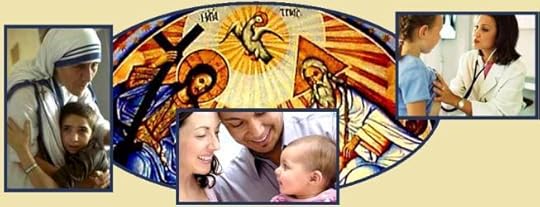
Gender: What Is It and Why Does It Matter? | Maria Fedoryka, Ph.D. | Homiletic & Pastoral Review
We Americans face a state of affairs relating to marriage and family … (where we) must now attempt to show why the divinely-instituted laws of marriage and family are binding not only for Christians, but hold true for everyone.
The aspects of things that are most important for us are
hidden because of their simplicity and familiarity. (One is unable to
notice something—because it is always before one’s eyes.) The real
foundations of his inquiry do not strike a person at all….And this
means: we fail to be struck by what, once seen, is most striking and
most powerful. 1
Ludwig Wittgenstein’s words here apply to the man-woman difference:
in the reality of marriage in its entirely self-evident and foundational
character, as well as in its absolute centrality to human existence.
Not long ago, the idea of having to explain them would have seemed absurd to most. 2
This distinction between man and woman, the magnificent reality of
romantic and spousal love, the permanent and devoted union of marriage
for which this love yearns, and its happy “overflow” into the creation
of a family, has so deeply structured our understanding of the world,
and the human person, that it would never have occurred to us to think
about the “why” behind them.
We Americans face a state of affairs relating to marriage and family
that has forced us to “(lose) the innocence of taking man and woman for
granted.” 3
We must now attempt to show why the divinely-instituted laws of
marriage and family—which, until recently, was taken by all simply as a
given—are binding not only for Christians, but hold true for everyone.
There is, however, a certain difficulty in the task, since the
“invention” of man and woman, and of marriage, are precisely that: an
invention proceeding, as it were, from God’s creative imagination. That
is, they cannot, in a mathematical sense, be shown to be necessary. A
different system would have been possible—as indeed, some created,
rational beings have no gender (angels), and do not enter into marriage.
But, that God has invented the reality of marriage in no way implies
that it is arbitrary or meaningless. On the contrary, there is a deep
intelligibility underlying the division of humanity into two genders,
and marriage as the unique union possible only between a man and a
woman.
Some preliminary reflections on the nature and meaning of gender,
generally speaking, are offered here as possible a groundwork for
further considerations on the Church’s teaching on marriage as founded
on the union of man and woman. For only if we understand the
metaphysical constitution of masculinity and femininity, and their
centrality to the being of man and woman, will we be able to defend
marriage against the current onslaught that would all but destroy it.
The creation of the human person as male and female is the most
central feature of the visible world. It is also at the very center of
God’s plan for humanity. This plan originates within the being of God
himself, and it is where we must begin if we are to discover the meaning
of gender.
Gender and Its Primary Significance 4
For all the impressive knowledge of God to which pre-Christian
philosophy attained, God reveals, in the New Testament, what was
completely unimaginable for the Greeks: that God is love. Not only that
God loves, which would have been absurd enough; but that God is love. How can this be? How can a being be love?
After Tragedy, Irish Abortion Laws Come Under Fire

After Tragedy, Irish Abortion Laws Come Under Fire | Michael Kelly | Catholic World Report
A young woman is dead, and some blame Ireland’s strict anti-abortion laws—but many questions remain unanswered.
The death of a young pregnant woman has thrust the issue of abortion center-stage
in Ireland, with pro-choice campaigners blaming the country’s ban on abortion
for the woman’s death. However, even a quick perusal of the facts reveals a
much more complex scenario. Pro-life advocates insist the tragic case is being
used by those trying to overturn Ireland’s pro-life legislative framework.
There have even been accusations that Catholic health-care ethics led to the
death.
Savita Halappanavar—a native of India who moved to the west of Ireland
some years ago—was 17 weeks pregnant when she went to the hospital on October
21, complaining about back pain. The 31-year-old was admitted to Galway
University Hospital. According to her husband, doctors determined she was
having a miscarriage. Little else is known officially, apart from the fact that
a week later, Halappanavar had died from septicaemia, a blood infection.
The only account of the events leading up to her death come from Halappanavar’s
distraught husband, who claims his wife asked for a termination of her
pregnancy when it became clear that she was miscarrying. He insists that
doctors refused because of the presence of a fetal heartbeat. His wife would be
alive, Praveen Halappanavar says, if doctors had induced labor and ended the
pregnancy as she requested. He told the Irish
Times that his wife died because Ireland is a Catholic country and follows
Catholic medical ethics.
Cue a torrent of anti-Catholic commentary on social media sites and from
prominent journalists and commentators. Despite a lack of facts, the collective
outcry was that this tragic incident had occurred because the hospital acted with
a Catholic ethos. The country’s Minister for Health, Dr. James Reilly,
intervened to warn against prejudging the situation before the conclusion of
two independent investigations surrounding the death.
“I am privy to certain facts but I am not privileged to share them,” Dr.
Reilly said.
He said that the question of a Catholic ethos preventing or inhibiting medical
personnel from carrying out proper medical treatment, as defined by the Medical
Council, had been raised. “I have no evidence of that, but, again, I am not
going to preclude what a coroner’s court will find, and I want to await that
independent investigation that a coroner always undertakes,” Dr. Reilly told the
Irish parliament, in response to questions about the incident.
While no one wants to intrude on Mr. Halappanavar’s obvious grief over
the death of his wife, medical experts and bioethicists have been quick to
express their view that Ireland’s ban on abortion had nothing to do with Mrs.
Halappanavar’s death. They insist that guidelines from the Irish Medical
Council are perfectly clear that pregnant women must be given all necessary
medical treatment.
November 17, 2012
New: "Christianity, Islam and Atheism: The Struggle for the Soul of the West"
Now available from Ignatius Press:
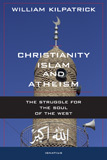
Christianity, Islam and Atheism: The Struggle for the Soul of the West
by William Kilpatrick
For many Americans the attack on the World Trade Center on September 11, 2001, was the first time they had considered Islam. Were the terrorists motivated by the true dictates of their religion, or had they hijacked Islam as well as the planes in a political cause unrelated to the teachings of Muhammad?
Christianity, Islam, and Atheism argues that Islam is a religion of conquest and subjugation and that in spite of 9 /11 and thousands of other terrorist attacks throughout the world, many in the West still do not know or admit this because it conflicts with their multiculturalism and their belief in the equivalence of all cultures and religions.
To meet the challenge from Islam, Christians need to know more about the important differences between Islam and Christianity, yet many have been lulled into complacency by the misleading and largely unexamined assumption that the two religions are similar. The time that Christians spend in pursuing common ground is time that Islamic activists will use to press their radical agenda.
In addition to challenging both the multicultural and common-ground approaches, William Kilpatrick also exposes the role played by atheists and secularists in advancing Islam. Despite paying lip service to freedom, radical secularists serve as enablers of radical Islam. The civil liberties that the West enjoys are the fruit of Christian civilization, Kilpatrick argues, and only a reawakened Christianity can defend them against Islam's advance.
William Kilpatrick is the author of several books, including Psychological Seduction and Why Johnny Can't Tell Right from Wrong. His articles on Islam have appeared in Investor's Business Daily, FrontPage Magazine, Jihad Watch, Catholic World Report, the National Catholic Register, World, and other publications. Professor Kilpatrick, who taught for many years at Boston College, lectures frequently to audiences in the US and abroad.
" Kilpatrick's insights into Western relativism, multiculturalism, and the resultant anti-Christian attitudes form a matrix by which the rot of a crumbling society can be better understood . . . This book summons Christians to awaken their love for the true Jesus Christ of the Gospel, to learn sober truth about Christianity and Islam, and live their faith courageously in the face of Muslim aggression."
- Mitch Pacwa, SJ, Author, St. Paul and the Power of the Cross
"Most politicians, journalists, and intellectuals either fall silent on the subject of Islamic theology or sanitize it through platitudes, all of which revolve around religious and cultural relativism. As William Kilpatrick convincingly shows in Christianity, Islam, and Atheism, this fashionable complacency has compromised Western civilization. In this indispensable book, he wakes the politically correct up from their dogmatic slumbers, sounding a vitally important alarm about the true aims of Islam."
-George Neumayr, contributing editor to The American Spectator and co-author of No Higher Power: Obama's War on Religious Freedom
"This extraordinary book pierces through the politically correct miasma of unreality that envelops us and explains clearly and persuasively, with mountains of evidence, the threat that Islam poses today to the Church and to Western civilization. William Kilpatrick is to be commended for penning a concise and comprehensive introduction to the reality and magnitude of the Islamic supremacist threat. This book should be essential reading for politicians, bishops, and everyone who is on the front lines of the culture wars."
- Robert Spencer, author of the NY Times bestseller The Truth About Muhammad
The Son of Man and the Little Apocalypse
A Scriptural Reflection on the Readings for Sunday, November 18, 2012 | Carl E. Olson
Readings:
• Dn 12:1-3
• Ps 16:5, 8, 9-10, 11
• Heb 10:11-14, 18
• Mk 13:24-32
At the start of this month, On the Solemnity of All Saints, the first reading was from The Apocalypse, the Book of Revelation. It described the saints from the perspective of heaven, showing them to be marked and sealed by God, set apart as holy. Next Sunday, on the Solemnity of Christ the King, the epistle reading is from the opening chapter of the same book. It describes Jesus Christ as the ruler of kings of the earth who “is coming amid the clouds” to judge all men at the end of time.
Today’s reading from the Gospel of Mark is closely related. It is from the Olivet Discourse, sometimes called a “little apocalypse” (see Mt 24-25 and Lk 21) because it contains difficult teachings by Jesus about the destruction of the Jerusalem temple in A.D. 70 and the final day of judgment. Like The Apocalypse of John the Revelator, the little apocalypse is filled with strong imagery and a complex web of allusions drawn from the Old Testament, especially from the prophets.
The challenge of making sense of today’s Gospel reading (and many related passages) is highlighted in Jesus, The Tribulation, and the End of the Exile (Baker Academic, 2005), written by Dr. Brant Pitre, a Scripture scholar who teaches at Our Lady of Holy Cross College in New Orleans. Pitre’s impressive study draws together a host of interwoven themes rooted in the Old Testament and referred by Jesus in his discourse, including the exile, the tribulation, the elect, the temple, and the messiah. I’ve chosen three insights provided by Pitre that will, hopefully, help readers better understand today’s Gospel reading.
The first is that the images of darkened sun and moon, falling stars, and the shaken powers of heaven were frequently used by Isaiah, Jeremiah, Joel, Amos, and other prophets. They referred to one or several of the following: a day of divine judgment, the destruction of a foreign city (Babylon, for example), the destruction of Jerusalem (Isa 24:10-23; Jer 4:11-31), the restoration of Israel from exile, and the coming of the Messiah (Isa 13:10-14:2). Put simply, Jesus was not employing heavily coded language, but the heavenly language of the prophets. “A close study of the similar images of heavenly tumult,” writes Pitre, “shows that Jesus’ forecast stands directly in line with the oracles of the ancient Israelite prophets and early Jewish eschatological writings.”
Secondly, Jesus used this language to describe his approach Passion and death, through which he, the promised Messiah, would deliver his people from tribulation and inaugurate the restoration of Israel. The prophecies of Daniel are essential, for they speak of “the son of man coming in the clouds” (Dan 7:13), a figure Jesus clearly identifies with himself (Mk 13:26; 8:38). The Son of Man will “gather his elect” and lead a new exodus out of sin and death and form the new Israel, the Church, through the new covenant of his blood.
Finally, the destruction of Jerusalem and the temple are central events, both historically and theologically, in this epic plan of salvation. Recall that Jesus, in considering the spiritual state of Jerusalem, said, “Behold, your house is forsaken and desolate” (Mt 23:38). This desolation, Pitre argues, refers to the cessation of sacrifice, which is the “abomination of desolation” referred to by Daniel (Dan 9:27; 11:31; 12:11). The sacrifices of the temple, having ended in sacrilege, were fulfilled and replaced by the perfect sacrifice of the Lamb of God, which takes away the sins of the world.
“Just as the first Exodus had been preceded and set in motion by a paschal sacrifice during a time of great trials and plagues,” Pitre explains, “so too Jesus saw his death as setting in motion the great paschal and eschatological trial that would bring about the restoration of Israel.” Today’s reading from Hebrews indicates this trial and restoration is still ongoing, as Jesus “waits until his enemies are made his footstool.” Meanwhile, we worship and serve a risen Lord and look to the return of the Son of Man.
(This "Opening the Word" column originally appeared in the November 15, 2009, edition of Our Sunday Visitor newspaper.)
November 16, 2012
The Upside-Down World of Catholic Higher Education
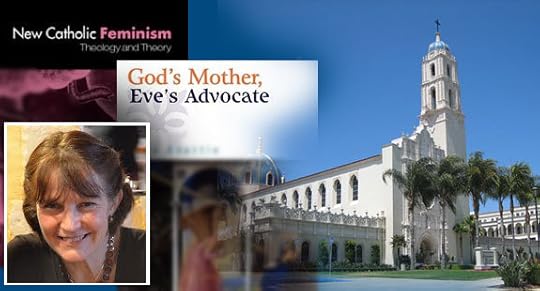
The Upside-Down World of Catholic Higher Education | Anne Hendershott | Catholic World Report
Recent controversies at the University of San Diego underscore the prevalence and influence of dissent on Catholic campuses.
In
an ideal Catholic world, if a Catholic theologian promoted a woman’s right to
choose abortion and encouraged access to same-sex marriage, while also comparing
the sacrifice of the Mass to an act of homosexual intercourse, the work of that
theologian would be marginalized. But, in the upside-down world of Catholic
higher education in 2012, such dissidence is applauded. Case in point: Tina
Beattie, the British theologian whose book, God’s
Mother, Eve’s Advocate: A Gynocentric Refiguration of Marian Symbolism in
Engagement with Luce Irigaray, promotes such heresy, has been honored as a
visionary on Catholic campuses here and abroad.
Conflict and confusion at the
University of San Diego
However,
after a decade of honors and accolades from Catholic institutions, Beattie’s
writings are finally receiving some criticism. In 2011, Bishop Declan Lang, of
the Diocese of Clifton in the UK, cancelled a lecture to be given by Beattie as
part of a diocesan speaker series celebrating the 50th anniversary of the
Second Vatican Council. And last month, Beattie’s invitation to serve as a
visiting fellow at the University of San Diego’s Frances G. Harpst Center for Catholic
Thought and Culture brought protests from the Catholic community in San
Diego and beyond. In fact, the protests were so strong that Mary Lyons, the
university’s president, abruptly withdrew the invitation just two weeks before Beattie
was scheduled to arrive on the USD campus.
Lyons’
decision to cancel the Beattie fellowship resulted in a vote of “no confidence”
from 99 members of the university’s Academic Assembly of the College of Arts
and Sciences (the vote was 99 in support, 16 against, and 19 abstentions). Writing
that “[t]he president has shown herself to be ethically bankrupt,” the 99
faculty members claimed that their vote “lets the world know that faculty here
do in fact support and believe strongly in academic freedom…this body declares
a loss of confidence in [Lyons’] leadership.”
In
explaining her decision, Lyons distributed a
letter to the University of San Diego community claiming that Beattie “has
taken positions that many would say challenge Church teachings.” And although Lyons stops short of stating she
herself would ever claim Beattie challenged Church teachings, the USD president
also said that “offering [Beattie] an honorary fellowship would be a betrayal
of those benefactors who supported the Center.” Pointing out that the Center
was designed and funded by generous men and women who wanted to present the
Catholic tradition “with accuracy and respect,” Lyons made the decision to
rescind the invitation. In a letter to the chair of the Academic Assembly,
Lyons wrote that she would allow Beattie to speak at the university in the
spring semester as long as the theologian was not given an “honorary
affiliation” with the institution—a reference to Beattie’s expected title of
visiting fellow.
The
real question is this: Why has Beattie—a theologian who has denigrated the
teachings of the Church for more than a decade—been given so many honors in the
first place?
St. Thomas Aquinas on the Prayer of Christ....
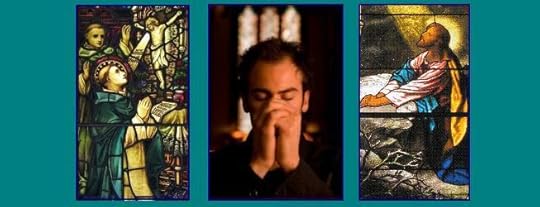
... as Manifest in the Prayers of the Mass | Dawn Eden | Homiletic & Pastoral Review
The Angelic Doctor’s overarching concern in treating of Christ’s prayer is to show that Jesus’ primary purpose in praying was to draw us to imitate him.
St. Thomas Aquinas begins his exposition on prayer in the Summa theologiae by explaining that prayer is not an act of the ap
petitive power, but is rather an act of reason. 1 Yet, later in the Summa, in his question concerning the prayer of Christ, he asks whether Jesus’ prayer was the expression of His sensuous impulse. 2 Why does he raise an issue that he has seemingly already settled?
One possible answer is that revisiting the relationship between
prayer and the sensitive appetite, enables Aquinas to discuss how the
liturgy brings the ecclesia orans into greater conformity with
the crucified Savior. This becomes clear when one examines how certain
prayers of the Roman Missal manifest one of the things Thomas says
Christ’s prayer is intended to teach us: “that it is permissible for a
man to entertain an instinctive affection for something which God does
not will. 3
Putting on Christ through putting on his desires
The Angelic Doctor’s overarching concern in treating of Christ’s prayer
is to show that Jesus’ primary purpose in praying was to draw us to
imitate him: “As God, Christ could accomplish all that he desired, but
not as man. … Yet, even though in his one person, he was God as well as
man, he wished to offer prayer to the Father. It was not that he, as a
person, lacked any power; he did this for our instruction.” 4
Thomas then enumerates two things Jesus sought to teach us by this
means: “He wished firstly to reveal to us that he was from the Father.
So, we find him saying: ‘Because of the people who stand about, have I said it’—namely the vocal prayer—’that they may believe that Thou hast sent me.’” … Secondly, he wished to offer us an example. 5
It is in keeping with this notion of Christ’s offering us an example
that Aquinas enters into the question of whether Jesus’ prayer was the
expression of his sensuous impulse. St. Thomas initially answers
that—following what has already been said about prayer emanating from
the reason—Christ’s prayer could not be the expression of his
sensuality, “since his sensuality was of the same nature and species in
Christ as in us.” 6
Having repeated his earlier teaching, Thomas then considers the
question from a different angle, observing that we may be said to pray
according to the sensuality when our prayer lays before God what is in
our appetite of sensuality; and in this sense Christ prayed with his
sensuality inasmuch as his prayer expressed the desire of his
sensuality, as if it were the advocate of the sensuality.” 7
Carl E. Olson's Blog
- Carl E. Olson's profile
- 20 followers



